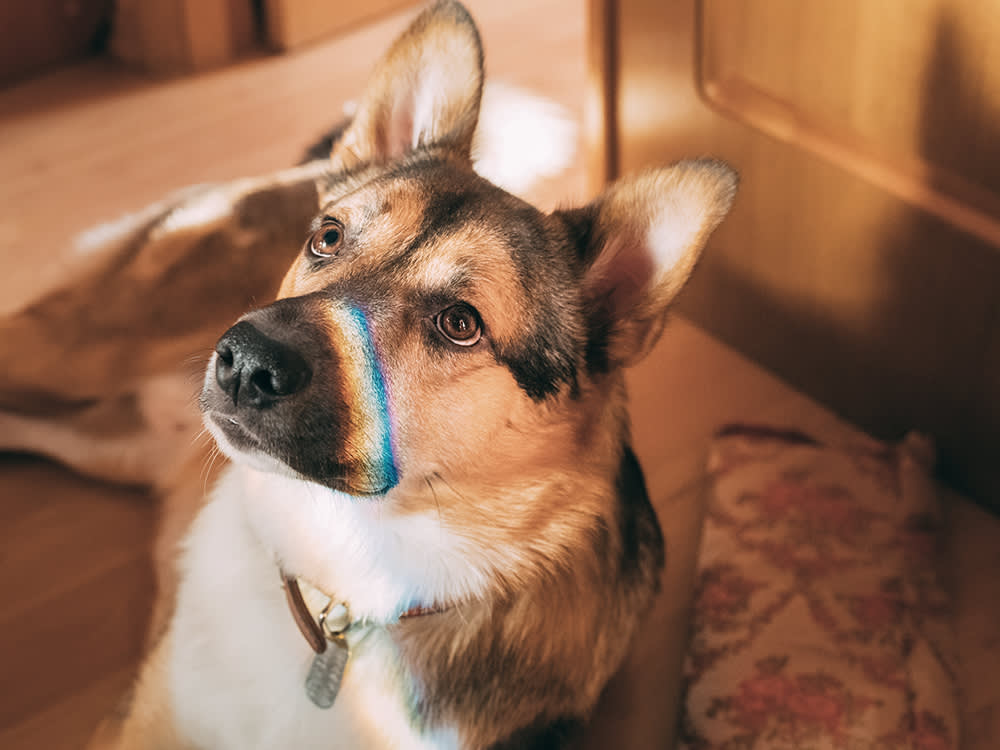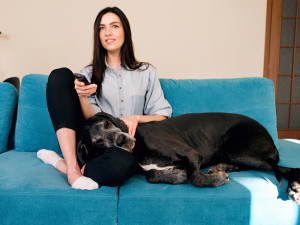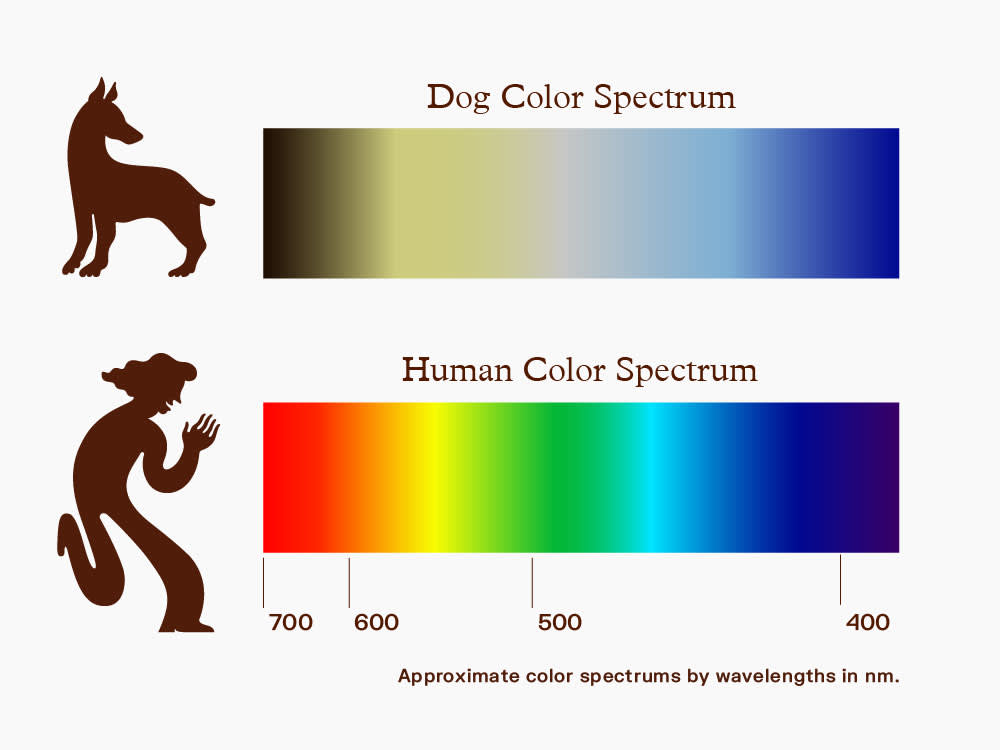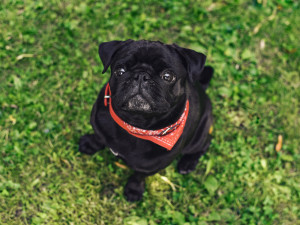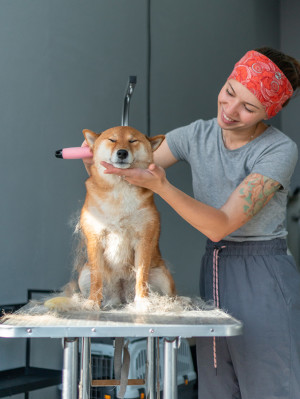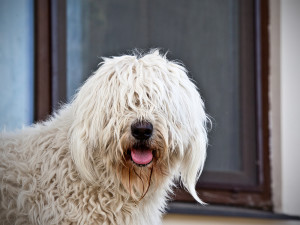Dog Vision: What Colours Do Dogs See?
They can’t take in as many colours as you can, but their world isn’t just black and white
From vibrant jumpers to toys in every colour, pup parents often love choosing new items for their dogs. But how many of the colours on your pup’s favourite toy can they actually see? You’ve likely heard that dogs are colour-blind or even that they see the world only in black and white, but the reality is a little more complex. Whilst dogs are able to see colour, they have a more limited colour vision spectrum compared to humans and those bright colours on their toys and bedding are more muted to their eyes.
So, what colours does a dog see? The truth about your dog’s vision may surprise you – and give you a little more appreciation for the way they navigate the world.
Are dogs colour-blind?
Whitney – my guide dog – and I visited a school recently, and for some reason, the Year Twos and Threes seemed particularly interested in colour-blindness. When one of them asked me if it’s true that dogs can only see black and white, I explained that dogs do see some colours, but they can’t tell the difference between red and green.
“If we’re at a crossing with a traffic light, it’s my job to judge when it might be safe to cross,” I said. I described the way I stand up straight, concentrate and listen for the rush of cars. When it sounds like the traffic is going in the direction I want to go, I take a guess the light is green and command Whitney to go forwards. Whitney’s ears perk up; she listens for traffic and looks left and right to confirm it’s safe before pulling me across.
So are dogs colour-blind? In a way, yes. A dog’s vision is similar to that of a human who has red-green colour blindness. To dogs, red may appear grey or dark brown, while yellow, orange and green all look like varying shades of yellow and violet appears to be just another shade of blue. Researchopens in new tab is still ongoing to determine if dogs can distinguish between red and green perhaps based on the intensity of the light, and some scientists believe canines may also use context clues to tell the difference, such as understanding that red objects tend to be darker than green ones.
Why can’t dogs see specific colours like red and green?
One girl told me that her school uniform is red. “But does Whitney think it’s green?” she asked. I gave that question some thought and realised I couldn’t answer it. When I got home, I did some research.
When researching what colours dogs can see, I found that dogs can see colours, but not the same way humans do. People can see a rainbow of variations, including violet, blue, green, yellow, orange and red. Dogs can only see blue, yellow and some shades of grey. See the colour chart above for an approximate idea of what colours dogs see best.
Dogs would see a rainbow as dark yellow (sort of brownish), light yellow, grey, light blue and dark blue. Dogs don’t see red, purple (violet) or orange like we do. So, while it is established that dogs see shades of yellow, blue and grey, if a dog were to look at a uniform that is red or green, it would appear as faded brownish, grey or indistinct.
Why are dogs colour-blind? The reason for this more muted spectrum in dog colour vision all comes down to the nerve cells in a dog’s eyes. Humans and dogs both have two main types of nerve cells, or photoreceptors, in their retinas: rods, which detect light and motion; and cones, which help differentiate colours. Human eyes have more cones, allowing us to see a vibrant spectrum of colour, while dogs can see just blue and yellow. This limited spectrum is known as dichromatic colour visionopens in new tab. But dogs have more rods than humans, which enables them to see better than we do in low light and to identify moving objects more easily.
How does a dog’s brain process colours?
So, how do dogs see colour? Dog eyes work much like a camera. Light enters through the pupil. The iris, a structure that can expand and contract, controls the amount of light allowed in. Light then passes through the clear cornea and lens, which focus the light on the retina, a light-sensitive layer. The retina contains colour-sensitive cones and motion- and light-sensitive rods, all of which convert light into electrical signals. The cones and rods send these signals via the optic nerve to the brain, which constructs an image from them.
Dogs have only two types of cones, compared with the three types in human eyes. As a result, dogs don’t distinguish as many colours as people do. A dog’s colour spectrum is more muted, allowing them to distinguish blue, yellow and various shades of grey. Dogs may also have difficulty distinguishing between different shades of the same colour, like light blue and dark blue.
Fun facts about dogs and colour
Although dog colour vision is much more limited than that of their human parents, dogs tend to be very attentiveopens in new tab to the colours they are able to perceive, and some evidence suggests that dogs may even be able to see some colours that humans cannotopens in new tab.
Certain colours improve a dog’s agility
Dogs do better at agility training when the weave poles, tunnels, jumps and boards are painted in colours they can easily discern, such as blue and yellow.
Dogs are nearsighted
Dog eyesight is 20/75, which makes them quite nearsighted. So, while your dog is likely better at detecting movement and seeing in dark rooms, their vision may be much blurrier than yours.
The best dog toy colour is...
Based on what we know about dogs’ colour vision, the best colour for dog toys is blue, which will stand out on most backgrounds, such as grass, which only appears yellowish or brown to dogs.
Frequently asked questions
Does a dog’s limited colour vision affect their daily life?
Dogs are born with colour blindness, so their limited colour vision doesn’t have much of an impact on the way they go about their daily lives. However, dogs have trouble seeing red or pink, so try to avoid these colours when selecting new toys for your dog.
Can I use specific colours to attract or get a dog’s attention?
Dogs see blue and yellow best, but the best way to get a dog’s attention is to use movement and to stand right in front of them, as well as to invest in training to help them learn and respond to commands.
What age do dogs have vision problems?
Like humans, dogs can develop vision problems at any age and for many reasons. Common vision problems that occur with age, such as cataracts, may be more likely in their senior years, which for most dogs is between nine to 11 years old depending on their size and breed.
What are the early signs of a dog going blind?
One of the most common physical signs of blindness in a dog is cloudy-looking eyes as they age. You may also notice your dog acting more nervous or hesitant when moving around the house, jumping on and off furniture, or using stairs, especially in low light. Some dogs may even become more clingy or aggressive when they struggle to see.
